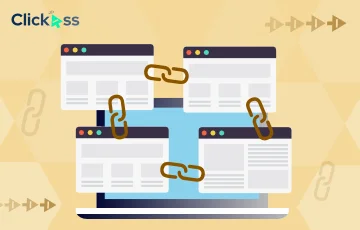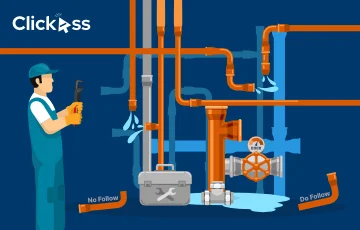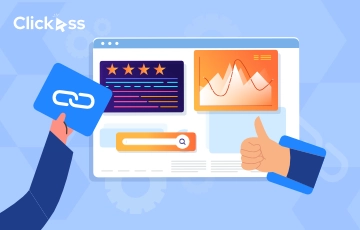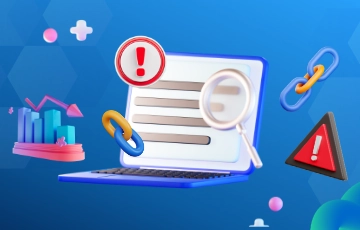
In the ever-evolving world of SEO, mastering the art of link building is crucial. However, it’s easy to fall into traps that can hinder your site’s performance.
In 2024, understanding and avoiding common link building mistakes is more important than ever. This guide sheds light on the pitfalls and provides actionable insights to refine your strategy.
16 Link Building Mistakes to Avoid in 2024
1. Building Links From Low Authority Websites
One major link building mistake to avoid is acquiring backlinks from low authority websites.
While it’s tempting to increase your backlink count quickly, the quality of these links matters significantly. Links from low authority sites can harm your website’s credibility and search engine ranking.
A decline in search engine ranking due to poor-quality backlinks can have a direct and significant impact on your site’s organic traffic, as depicted in the accompanying image.
This image vividly illustrates the steep and abrupt decline in traffic that often follows a significant drop in search rankings.
It’s essential to focus on high-quality, reputable websites for your link building efforts. Remember, a few high-quality links are far more beneficial than numerous low-quality ones.
In the realm of SEO, understanding the truth about backlinks is key. It’s not just about the number of links but the relevance and authority of the linking sites.
Prioritize building relationships with authoritative domains in your niche. This approach will not only enhance your backlink profile but also improve your website’s overall SEO performance.
2. Buying Links
Another prevalent link building mistake is the temptation to buy links. This shortcut might seem like a quick fix to boost your site’s authority, but it’s fraught with risks.
Purchased links are often seen as manipulative by search engines and can lead to penalties.
Authentic link building takes time and effort but yields long-term benefits.
It’s crucial to understand the truth about backlinks: they should be earned, not bought.
Focus on creating high-quality content that naturally attracts backlinks. Engage with your online community and collaborate with other websites and influencers in your field to gain legitimate, valuable backlinks.
Remember, genuine efforts in link building are always more rewarding than taking shortcuts.
3. Avoiding ‘NoFollow’ Links
A significant link building mistake is avoiding no follow links.
There’s a common misconception in the SEO community that no follow links don’t contribute to a website’s ranking, leading many to focus solely on acquiring do follow links.
However, no follow links play an essential role in creating a balanced and natural link profile. They contribute to the diversification of your backlink portfolio, which is a positive signal to search engines.
Furthermore, no follow links can drive substantial referral traffic and enhance your website’s visibility. They are particularly beneficial in establishing brand presence and can indirectly impact your SEO performance by increasing site traffic and engagement.
It’s important to understand that a healthy backlink profile includes a mix of both do follow and no follow links.
Let’s understand this with Cloudtalk (Call Center Software) backlink analysis with the help of Ahrefs tool.
Both the images showcase Cloudtalk’s balanced backlink profile.
Embracing this diversity in your link building strategy ensures a more robust and organic approach to SEO.
4. Linking from Non-Relevant Sites
Linking from non-relevant sites is a common mistake that can undermine your link building efforts. Search engines, especially Google, place a high value on the relevance and context of backlinks.
Links from websites that bear no relation to your content can be seen as inauthentic or manipulative, which can negatively impact your website’s search rankings.
Example of non-relevant linking:
The key is to focus on obtaining links from sites that are relevant to your niche or industry. This not only boosts your SEO efforts but also ensures that the audience or people drawn to your site are relevant and genuinely interested in your offerings.
Relevant backlinks contribute to your site’s authority and trustworthiness in the eyes of both search engines and users.
Therefore, investing time in identifying and engaging with relevant, authoritative websites in your field is crucial for a successful link building strategy.
Example of relevant linking:
5. Relying on Automated Link Building
Excessive reliance on automated link building is a critical error in SEO strategy.
Automation tools offer convenience and can help in scaling link building efforts, but they often lack the personalization and strategic thinking required for effective link building. These tools can lead to a backlink profile that appears unnatural or spammy, which search engines can penalize.
The human aspect of building relationships is essential for acquiring high quality backlinks. Manual outreach, engaging in genuine interactions, and creating compelling content that naturally attracts backlinks are key elements of a successful link building strategy. This approach is more labor-intensive but yields a more authentic and valuable backlink profile.
Additionally, manual link building allows for more targeted and strategic placement of links, ensuring that they are placed on relevant, authoritative sites that can provide real value to your SEO efforts.
6. Backlinks from Sites With Toxic Link Profiles
One of the critical link building mistakes is acquiring backlinks from sites with toxic link profiles.
Such websites are often penalized by search engines for unethical SEO practices. Links from these sites can significantly harm your website’s SEO standing. It’s crucial to conduct thorough backlink audits regularly. This process involves checking the credibility and reputation of the linking sites.
Avoiding backlinks from sites involved in spammy practices, have low-quality content, or participate in link schemes is essential.
These toxic links can lead to penalties from search engines, diminishing your site’s authority and ranking. Focus on building links from reputable, high-quality websites.
Using reliable SEO tools to evaluate the health of potential linking sites can save your website from being associated with harmful web entities and maintain a clean, effective backlink profile.
7. Avoid Using Too Many Exact Match Anchor Texts
Another mistake in link building is the excessive use of exact match anchor texts.
While it’s important to have keywords in your anchor text for SEO, overdoing it with exact matches can appear manipulative to search engines. This practice can trigger alarms for artificial link building, potentially leading to penalties.
The key is to maintain a natural and varied anchor text profile. Incorporate a mix of exact match, partial match, branded, and generic anchor texts.
This variety helps in making your backlink profile appear more organic and less forced. It also enhances the user experience by providing contextually relevant links.
A diverse anchor text strategy is crucial for a healthy link building approach, as it avoids the pitfalls of over-optimization and aligns better with the sophisticated algorithms of modern search engines.
8. Thinking You Don’t Need to Proactively Build Links
A common misconception in SEO is the belief that proactive link building isn’t necessary. This passive approach can severely limit your website’s growth and visibility in search engine results.
To illustrate this, let’s consider the example of a SaaS product, specifically “time tracking software”.
Imagine you’ve created an engaging landing page for this product and published 20 to 30 related blog posts. You might be tempted to think that this is enough, that backlinks will magically appear, and traffic will automatically boost.
However, let’s look at the reality of this scenario. With a keyword difficulty of 79, ranking for “time tracking software” is extremely challenging.
More importantly, a SaaS player in this field would need backlinks from approximately 329 websites to rank within the top 10 search results for this keyword, as shown in the accompanying image.
This clearly demonstrates that simply creating content isn’t enough.
Proactive outreach for contextual and high-authority backlinks is essential. Without actively seeking these backlinks, your chances of ranking well for such a competitive keyword are slim, underscoring the need for a proactive link building strategy.
Proactive link building also includes participating in community discussions, guest blogging, and leveraging social media to increase your website’s exposure.
Neglecting these activities can result in a stagnant backlink profile, hindering your website’s potential to rank higher and reach a broader audience. A proactive link building strategy ensures continuous growth and adaptation to the evolving landscape of SEO.
9. Not Monitoring and Analyzing Backlink Data
A common oversight in link building is not monitoring and analyzing backlink data.
Regularly tracking your backlinks is crucial for understanding the impact of your link building strategies. Ignoring backlink data can lead to missed opportunities for optimization and the inability to identify potentially harmful links.
Effective backlink analysis involves checking the number of backlinks, the quality and relevance of linking sites, and the growth patterns of your link profile. This analysis helps in refining your strategies, removing or disavowing toxic links, and focusing on obtaining high-quality backlinks.
Additionally, understanding how these links affect your site’s performance is essential for continuous improvement. Tools like SEMrush, Ahrefs and various SEO platforms offer insights into backlink data, making it easier to monitor and adjust your link building efforts for optimal results.
Example: SEMrush Backlink Analysis Tool
10. Leaving Links to Chance (vs. Systemizing Success)
Leaving link building to chance rather than systemizing it is a significant mistake. A haphazard approach can result in an inconsistent and ineffective backlink profile.
Systemizing your link building efforts means having a structured strategy that includes identifying target websites, creating compelling content, and conducting outreach in a planned and consistent manner.
It involves setting clear goals, such as increasing domain authority or driving referral traffic, and employing tactics that align with these objectives. By systemizing link building, you can ensure a steady and sustainable growth in your backlink profile.
This approach allows for better tracking of what works and what doesn’t, enabling continuous optimization of your link building strategy. Systemization turns link building from a random act into a strategic, goal-oriented process.
11. Building Too Many Backlinks Too Quickly
Building too many backlinks too quickly is a red flag for search engines and can be interpreted as manipulative behavior.
Rapid increases in backlinks can trigger penalties as they often indicate unnatural link acquisition, like participating in link schemes or buying links. It’s essential to grow your backlink profile at a natural pace.
Focus on building high-quality links over time rather than a large number of links in a short period.
Gradual link building through creating valuable content, engaging with your community, and establishing partnerships with relevant websites is more sustainable and beneficial for your SEO in the long run.
A steady pace in acquiring backlinks signifies organic growth and authenticity to search engines, enhancing your website’s credibility and authority.
12. Prioritizing the Wrong Pages at the Wrong Times
A less obvious but critical mistake in link building is prioritizing the wrong pages at the wrong times. Not all pages on your website will have the same value or potential for attracting backlinks.
Focusing your efforts on pages that are less likely to attract links or are not critical to your business objectives can lead to inefficient use of resources.
It’s important to identify and prioritize pages that will benefit most from backlinks, such as cornerstone content, key product or service pages, and content that has proven to be popular with your audience.
This prioritization should align with your overall SEO and business goals.
Additionally, the timing of your link building efforts can be crucial. Aligning your efforts with industry trends, seasonal events, or product launches can maximize the impact of your backlinks.
Strategic prioritization ensures that your link building efforts are effective and aligned with your broader marketing objectives.
13. Using the Wrong Link Building Tactics for the Wrong Kinds of Links
A nuanced aspect of link building is using the right tactics for the right kinds of links. Each type of link, whether it’s from blogs, forums, news sites, or directories, requires a different approach.
For instance, guest posting is effective for blogs, but not for directories. Using the wrong tactics can lead to ineffective efforts and missed opportunities.
It’s essential to understand the nature of the target site and tailor your approach accordingly. This might involve creating different types of content or varying your outreach strategy.
Matching the tactic with the type of link ensures a higher success rate in your link building efforts, making your strategy more efficient and effective.
14. Ignoring Local SEO and Geo-Targeted Link Building
Many overlook the importance of local SEO and geo-targeted link building in their broader SEO strategy.
For businesses with a local presence, local backlinks are crucial. These links from local news sites, community portals, and local directories significantly boost local search engine rankings.
Neglecting this aspect can mean missing out on a highly targeted and engaged audience.
Implementing geo-targeted link building strategies, such as participating in local community events or collaborating with local influencers, can greatly enhance your visibility in local search results.
15. Scattergun Link Building vs. Doubling Down on 2-3 Scalable Ones
The scattergun approach to link building, where efforts are spread thin across many tactics, is less effective than focusing on 2-3 scalable strategies.
By concentrating on a few high-impact methods, you can optimize your resources and achieve better results. This could include tactics like content marketing, guest blogging, or relationship building with key influencers. Focusing allows for deeper development of these strategies, leading to more significant and sustainable backlink growth.
It’s about quality over quantity, and a more focused approach often yields better ROI.
16. Failing to Disavow Harmful Links
Failing to disavow harmful links is a critical oversight in managing your backlink profile. Harmful links from spammy or irrelevant sites can negatively impact your site’s SEO.
Regularly auditing your backlink profile and disavowing toxic links is essential. This practice tells search engines that you do not endorse these links, helping to maintain the integrity and quality of your backlink profile.
Disavowing harmful links is a crucial maintenance task in proactive SEO management.
Conclusion
In 2024, mastering the art of link building is more about strategy and precision than ever before.
Avoiding these 16 common mistakes can greatly enhance your SEO efforts, driving valuable traffic and solidifying your website’s authority.
Understanding and steering clear of pitfalls such as scattergun approaches, ignoring local SEO, and using mismatched tactics are crucial for creating a sustainable and impactful link profile.
Embracing this strategic approach not only elevates your site but also aligns with best practices for enduring growth in search rankings. If you’re ready to develop a refined link-building strategy and steer clear of these common errors, consider taking the next step.
Schedule a call with me today, and let’s work together to build a robust and effective SEO foundation for your business.
Together, we can unlock the potential for exponential growth and ensure your website stands out in the digital landscape.
About The Author
Dhruv Mehta
Dhruv Mehta is a SaaS link building expert with a passion for demystifying digital strategies. Join him on a journey through insightful SaaS SEO and Link Building Insights, where he transforms digital novices into confident navigators of the online world.
Table of Contents
ToggleRelated Posts
Unlocking the Power of Reciprocal Links in 2024: Strategies for SEO Success
13 Link Building Challenges & How to Overcome Them
16 Link Building Mistakes to Avoid in 2024
What Are PBN Backlinks? (And Why You Shouldn’t Use Them)
Analyzing Your Backlink Profile for SEO & 2 Perfect Examples
10 Ways to Index Backlinks Faster in 2024
Nofollow vs. Dofollow Backlinks: Understanding Their SEO Implications
Tiered Link Building: Everything You Need to Know
Skeptical About Forum Backlinks? Here’s What You Need to Know
Backlink Management in 2023: 10 Ways to Track and Organize Your Backlinks
What is Link Equity and How Is It Determined?
Link Building 101: Master The Basics and Beyond
The Power of Backlinks: Why They Are Essential for SEO Success
Link Insertion: How to Do it with $0 Investment?
Everything You Need to Know About Link Farming
9 Underrated Techniques to Get High Authority Backlinks in 2023
Doorway Page Explained: Ultimate Effects on SEO And Rankings
Top of Funnel Marketing For SaaS: Strategies, Measurement, and Examples
Link Building Outsourcing: The Definitive Guide [2023]
How Niche Driven SEO Can Uplift Your Client’s Rankings?
8 Cost-Effective Ways to Get You Higher Search Engine Rankings
Does CTR Manipulation Really Work?
An Ultimate Guide to Growth Marketing

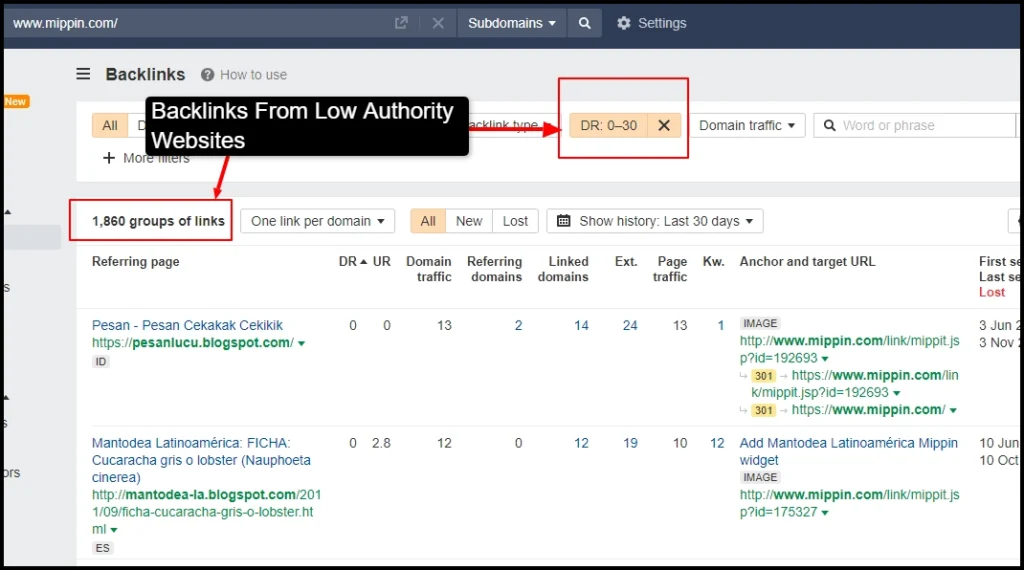
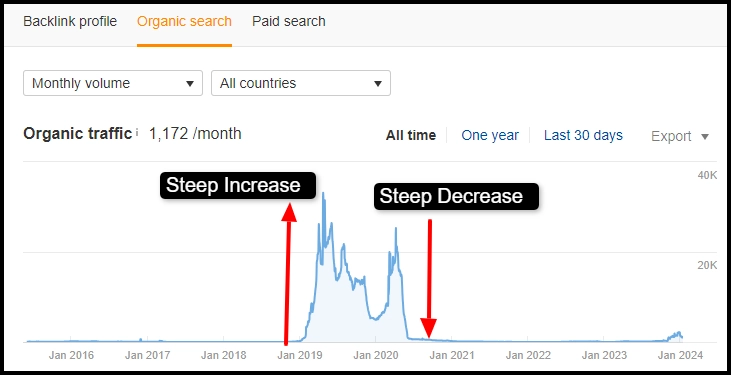





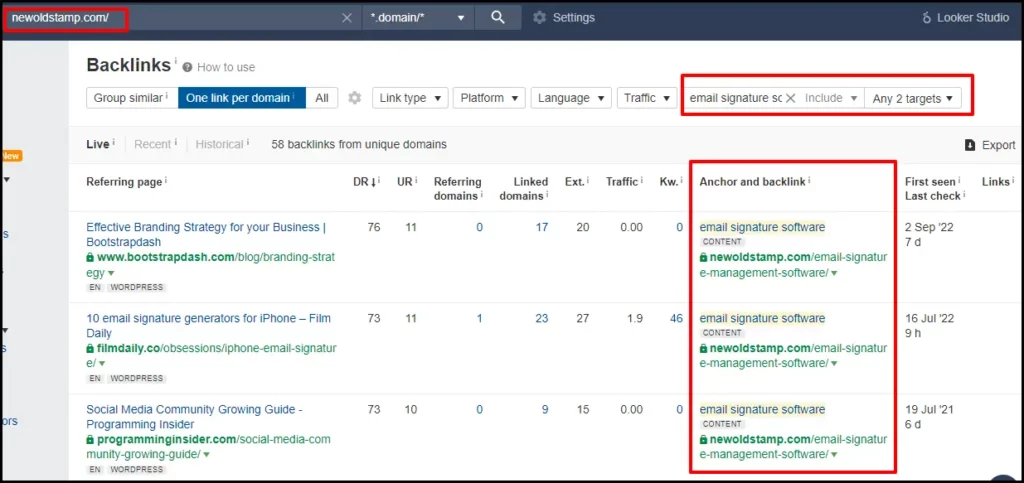
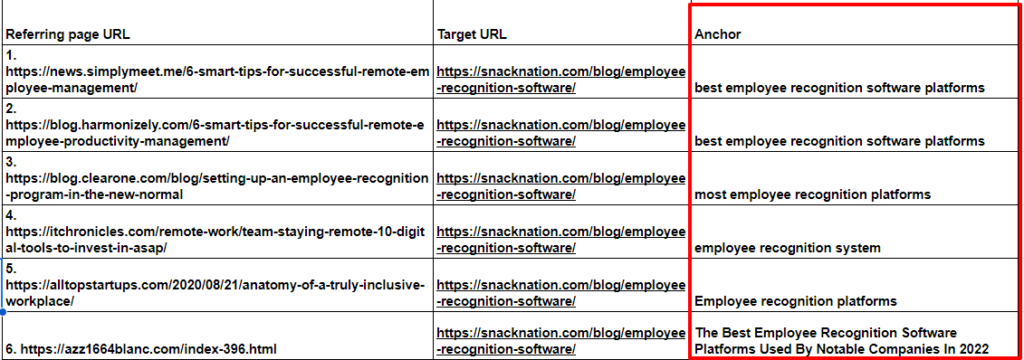
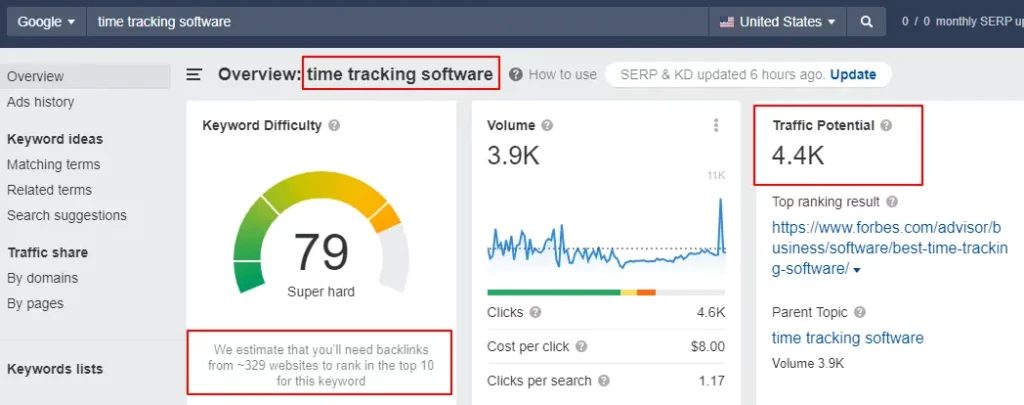
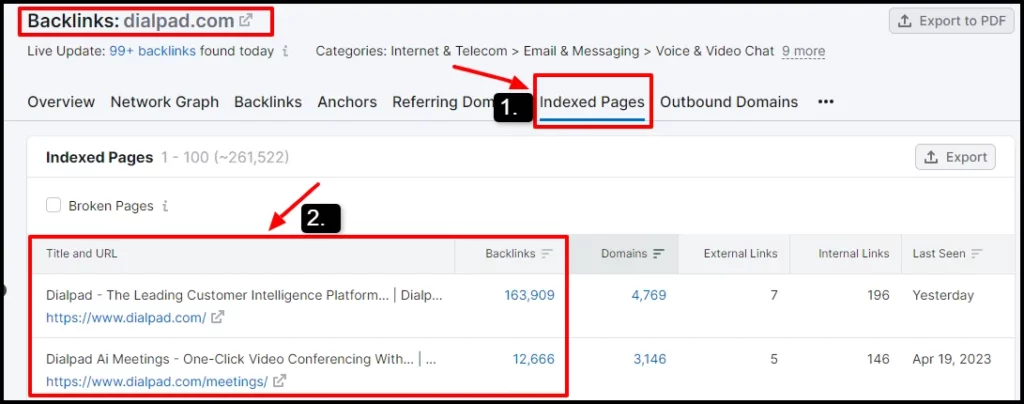
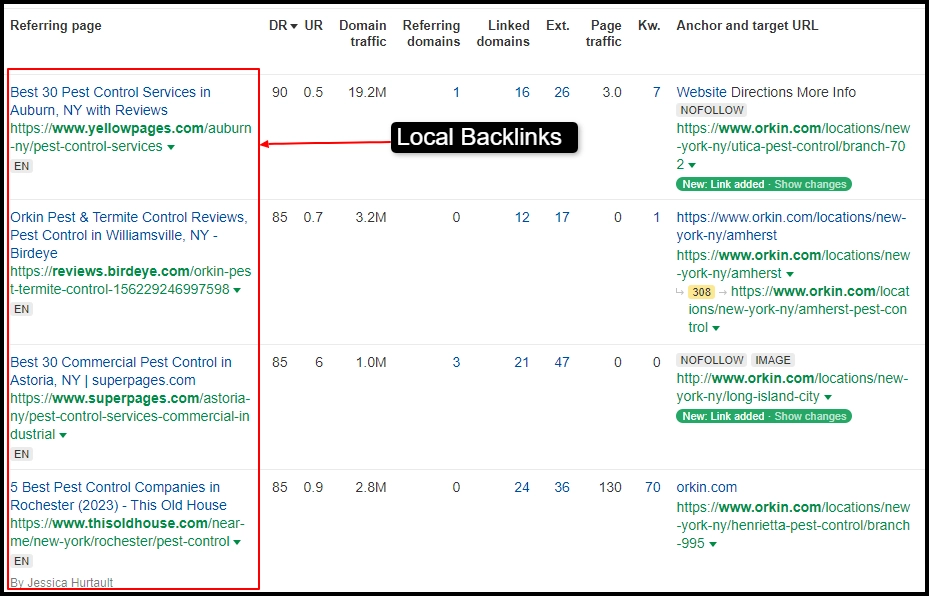




![Backlink Profile: Analysis + [2 Perfect Examples]](https://clickass.io/wp-content/uploads/2024/01/Examples-of-Perfect-Backlink-Profile3-1.webp)
